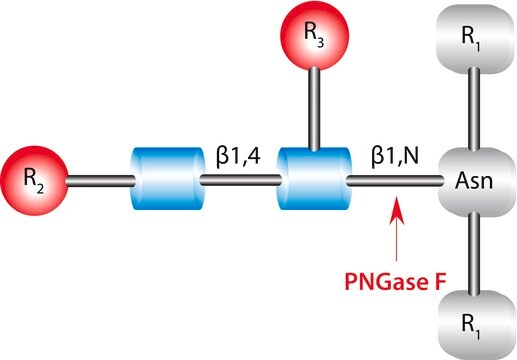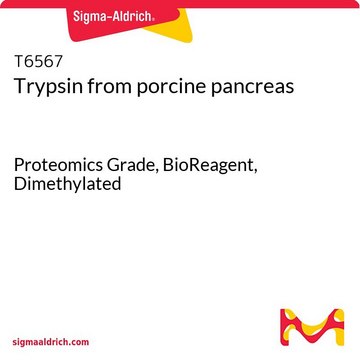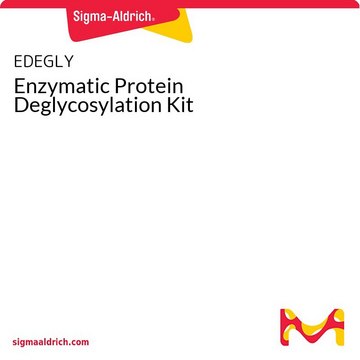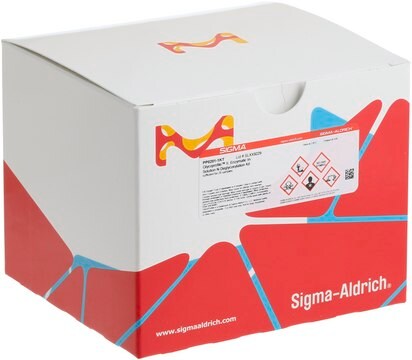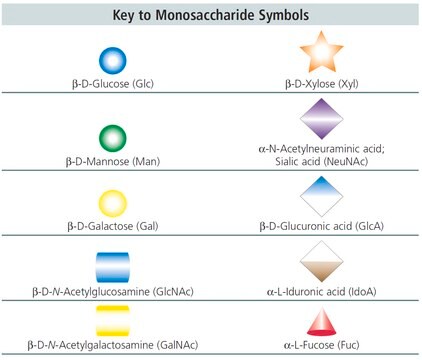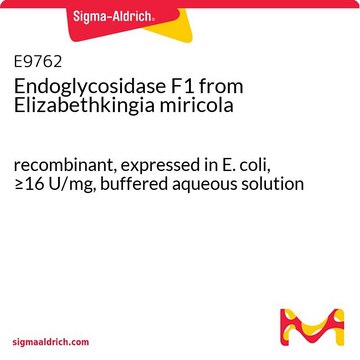P7367
PNGase F from Elizabethkingia meningoseptica
BioReagent, ≥95% (SDS-PAGE)
Synonym(s):
N-Glycosidase F, PNGase F from Chryseobacterium meningosepticum, PNGase F from Flavobacterium meningosepticum, Peptide N-glycosidase
About This Item
Recommended Products
biological source
bacterial (Elizabethkingia meningoseptica)
Quality Level
conjugate
(N-linked)
product line
BioReagent
Assay
≥95% (SDS-PAGE)
form
powder
shelf life
≥1 weeks at 2‑8 °C (for a reconstituted solution >500 units/ml)
≥1 yr at 2‑8 °C
Solution is stable for at least 3 freeze-thaw cycles
mol wt
~36 kDa
concentration
≥300 units/mL
≥50 units/mL
optimum pH
~8.6
shipped in
wet ice
storage temp.
2-8°C
Looking for similar products? Visit Product Comparison Guide
General description
Application
- for de-N-glycosylation of Zika20virus E protein
- to evaluate coxsackievirus and adenovirus receptor glycosylation using CAR-expressing COS cells
- to verify the N-linked glycosylation of MHC class 1 polypeptide-related sequence A (MICA)
Biochem/physiol Actions
Unit Definition
related product
Signal Word
Danger
Hazard Statements
Precautionary Statements
Hazard Classifications
Resp. Sens. 1
Storage Class Code
13 - Non Combustible Solids
WGK
WGK 2
Flash Point(F)
Not applicable
Flash Point(C)
Not applicable
Personal Protective Equipment
Choose from one of the most recent versions:
Already Own This Product?
Find documentation for the products that you have recently purchased in the Document Library.
Customers Also Viewed
Articles
N-Linked Glycan Strategies; Sigma-Aldrich.com
Our team of scientists has experience in all areas of research including Life Science, Material Science, Chemical Synthesis, Chromatography, Analytical and many others.
Contact Technical Service